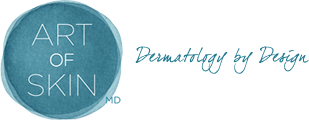According to the Skin Cancer Foundation, approximately 42 percent of us experience a sunburn at least once a year. That is an astounding statistic! We know that a history of severe sunburns is a risk factor for melanoma, and ultraviolet light exposure is strongly related to the development of other skin cancers including basal cell carcinoma and squamous cell carcinoma.
Check out the videos below featuring me (Dr. Melanie Palm) addressing sunburn treatment and prevention on San Diego TV outlets:
UT-TV SAN DIEGO ON PRIMETIME WITH TAYLOR BALDWIN:
SAN DIEGO 6 ON SAN DIEGO LIVING WITH KRISTIN MOSTELLER:
KUSI ON GOOD MORNING SAN DIEGO WITH MIKE CASTELLUCCI:
So what can we do to prevent sunburns and all of the uncomfortable sequelae that follows: the pink skin, the hot flush to the skin, the feverish body aches, and the flaky skin that follows. There are some simple and easy to remember steps that can help to minimize the opportunity for the San Diego skin scorching.
1. USE SUNSCREEEN! Pick a broad spectrum sunscreen that covers both UVA and UVB. UVA is related to aging changes in the skin – pigmentation, loss of elasticity, and premature wrinkling. UVB causes the burn like response following sun exposure. Most dermatologists including myself recommend a physical blocking agent as one of the sunscreen’s active ingredients – like zinc oxide or titanium dioxide. Make sure that the SPF is 30 or higher. Apply sunscreen prior to going outside and reapply often…usually every 90 minutes during outside activities.
2. Seek shade and avoid peak hours. Being a part of the beautiful weather is part of being a San Diegan, but that doesn’t mean we can’t be sun smart. Try to avoid outside activities during peak sun hours of 10 am to 4 pm. This is when the UV exposure is most intense and shadows are shortest and hard to find.
3. Try supplementation. In addition to the requisite sunscreen use, there are a few dietary supplements that can help minimize the opportunity for sunburn and have a protective role for your skin. A fern extract for the polypodium leucotomos plant is packaged as capsules called Heliocare. Ingestion of Heliocare prior to sun exposure is somewhat protective against damage waved by UV waves. Oral intake of green tea has a similar somewhat protective effect. However, neither is considered a suitable substitute for photoprotection and both should be used in conjunction with sunscreen.
Prevention is the best treatment for sunburn. However, if one does occur, early intervention is key. Contrary to popular belief, there are several measures that can be taken to alleviate a sunburn.
Here are some helpful steps:
1. Take ibuprofen as soon as possible. It is an non-steroidal anti-inflammatory that not only alleviates pain but decreases the inflammation associated with a sunburn.
2. Use a topical steroid. This is best done at the first sign of a sunburn. Over the counter hydrocortisone works in a pinch, but a board-certified dermatologist can provide a prescription-strength steroid that better addresses a sunburn.
3. Put on the red light. Like the famous Police song “Roxanne,” red light also works for sunburns. A red diode light called the Healite II is used for Art of Skin MD patients to reduce inflammation associated with sunburn and make the redness subside more quickly. The red light takes mere minutes, is covered by insurance, and is painless.
4. Seek professional skin help. If the sunburn is causing blisters, fever, flu-like symptoms, or other concerning side effects, call a health care professional immediately. Although your dermatologist can handle most significant sunburns, occasionally hospitalization including care in the burn unit may be required to replenish fluid and decrease pain.
5. Prepare to moisturize. Once the sunburn has resolved, the skin often peels, sometimes significantly for the next week to 10 days. It is important to use a moisturizer, and use it often. Moisturizers that contain ceramides are particularly helpful. Ceramides are cholesterol-derived, natural occurring fats that normally moisturize our skin surface. During inflammation, they are depleted. CeraVe and Cetaphil among others are brands that contain the dry-skin squashing ceramides.

